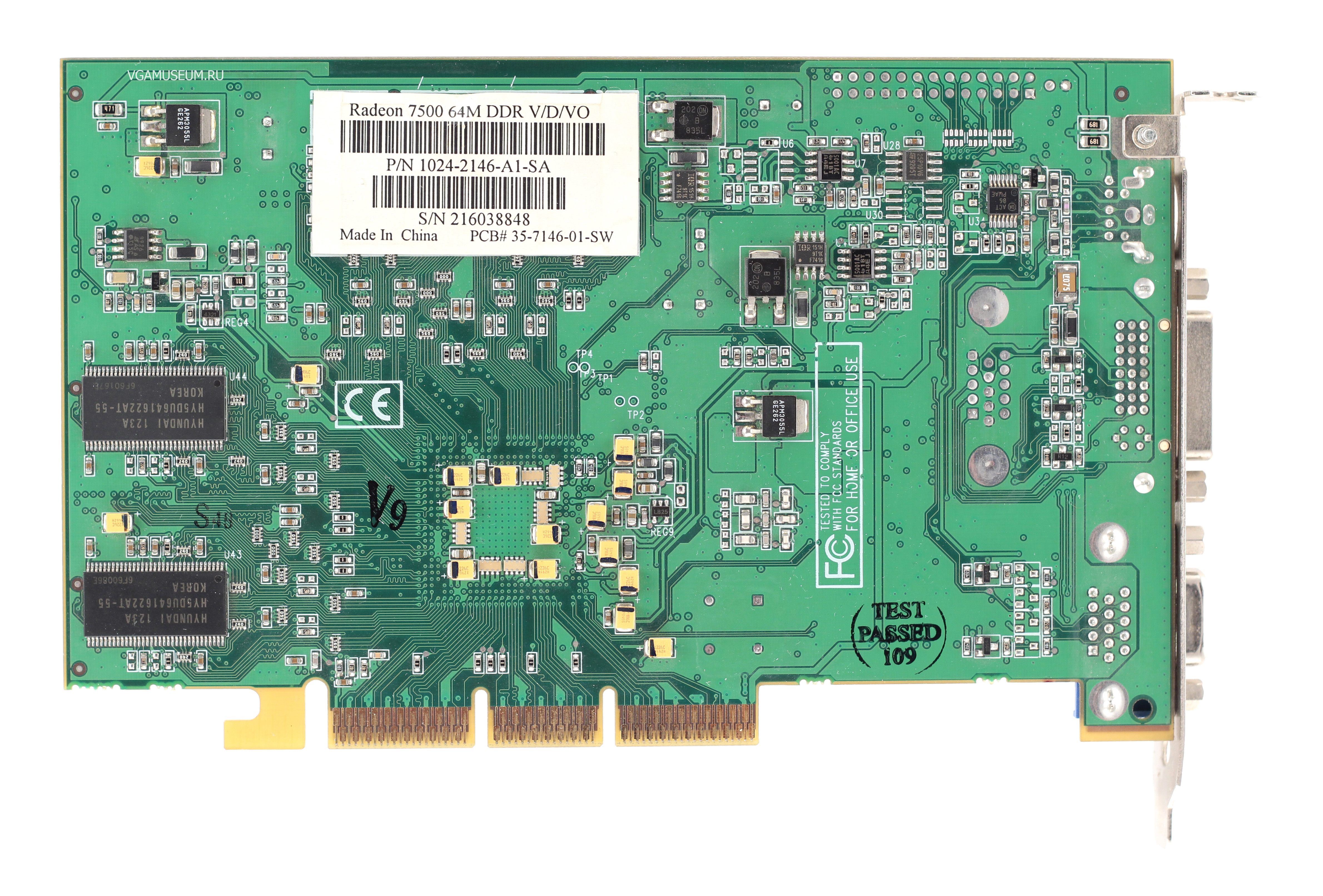Ati 7500 Drivers For Mac

The second generation, ATI RADEON-based graphics solution for notebooks, MOBILITY RADEON 7500 offers revolutionary performance for the avid 3D gamer, or the professional looking for workstation.
Translation(s): English - Français - español - Italiano - Русский
This page describes use of the open source display drivers for ATI/AMD graphics hardware on Debian systems. For information on the proprietary driver, see ATIProprietary.
Freecom dvb driver for mac download. Contents
- AMD/ATI Open Source Drivers (amdgpu, radeon, r128, mach64)
- Drivers
- Hybrid Graphics
Identification
The AMD/ATI graphics processing unit (GPU) series/codename of an installed video card can usually be identified using the lspci command. For example:
See HowToIdentifyADevice/PCI for more information.
Drivers
Support for newer AMD graphics hardware is provided by the xserver-xorg-video-amdgpu package.
Support for older AMD (nee ATI) graphics hardware is provided by the xserver-xorg-video-ati driver wrapper package, which depends on three hardware-specific driver packages:
xserver-xorg-video-mach64
xserver-xorg-video-r128
xserver-xorg-video-radeon
The ati wrapper driver autodetects whether your hardware has a Radeon, Rage 128, or Mach64 or earlier chip and load the radeon, r128, or mach64 xorg video driver as appropriate.
Supported Devices
The amdgpu driver in Debian 9 'Stretch' supports newer AMD GPUs.
The radeon driver in Debian 8 'Jessie' supports R100 to Hawaii (Radeon 7000 - Radeon R9 290) GPUs. See the radeon(4) manual page and the radeon page on the X wiki for more information.
Firmware
Proprietary, binary-only firmware (aka microcode) was removed from the Debian kernel's radeon DRM driver in linux-2.6 2.6.29-1, to resolve Debian bug 494009. The firmware can be provided by installing the firmware-amd-graphics or firmware-linux-nonfree package.
Without this package installed, poor 2D/3D performance in the radeon driver is commonly experienced. Some GPUs may require firmware to operate the X Window System, or do dual display.
Installation
The following procedure will install the open source display driver packages, DRI modules (for 3D acceleration) and driver firmware/microcode:
If you have previously used the non-free nvidia proprietary driver, then you need to uninstall it if you wish to use OpenGL accelerated graphics. The easiest way is to use the command: Don't forget the '.' dot after nvidia - This erases every package with 'nvidia' in its name.
Add 'contrib' and 'non-free' components to /etc/apt/sources.list, for example:
Update the list of available packages:
Install the firmware-linux-nonfree, libgl1-mesa-dri and xserver-xorg-video-ati packages:
- Restart your system to load GPU device firmware.
Troubleshooting
Use of firmware/microcode used by the radeon DRM driver can be verified using the dmesg command. For example:
If files were unable to be loaded, ensure the firmware-linux-nonfree package is installed (refer to Installation).
Screen flickering with Adobe Flash: see FlashPlayer#flickering.
Configuration
In most cases, manual configuration for the open source display drivers is not required, as the Xorg X server automatically detects and configures available hardware.
The following optional configuration can be used to increase 3D performance. See the xorg.conf(5) and radeon(4) manual pages for more information.
Hybrid Graphics
AMD ships hybrid graphics with Intel cards . Both the cards get turned on in turn overheating the computer and it also makes lot of noise.
Debian Stretch
Debian Stretch comes with a version MESA version which supports DRI Offloading. Make sure both Intel and radeon drivers are installed. It also needs firmware-linux-nonfree package to get it to work.
Check if both the cards are getting listed :
The above listing should give both the names of the cards and the associated drivers. In order to have the Radeon card handle the graphic intensive process use:
You can test the settings with the command:
Where the output should be AMD.
So using the option DRI_PRIME you could run 3D/games/movies which need extra graphic power.
See Also
ATIProprietary - Installing the closed source proprietary driver
Testing performance
External Links
http://x.org/wiki/radeon
CategoryProprietarySoftwareCategoryHardwareCategoryVideo
If you use Boot Camp to run Windows on your Mac, you can visit the AMD website to download the latest version of their drivers for Windows. These Mac computers use AMD graphics:
- 15-inch MacBook Pro models introduced in 2015 or later
- 27-inch iMac models introduced in 2014 through 2017, as well as the 21.5-inch Retina 4K iMac introduced in 2017
- iMac Pro introduced in 2017
- Mac Pro introduced in 2013
Check your version of AMD graphics drivers

- Start up your Mac in Windows.
- Take any of these steps:
- Right-click your desktop and choose AMD Radeon Settings.
- Or click Radeon Settings in the notification area.
- Or choose AMD Radeon Settings from the Programs menu.
- In Radeon settings, click the System Tab, then click the Software tab.
- The version number is shown under Driver Packaging Version.
Download and install the latest AMD graphics drivers
- In Windows, go to the AMD website, then click Drivers & Support.
- Select your product from the list, not the menu: First select Graphics, then select Mac Graphics in the next column, then select Apple Boot Camp in the next column.
- Click Submit to view the list of available drivers.
- Look for the driver version that supports your Mac model. If it's a later version (higher number) than the version installed on your Mac, click Download.
- Extract the downloaded ZIP file, then run the Setup app in the resulting folder to install the drivers.